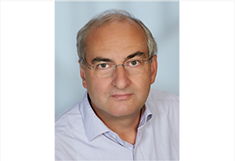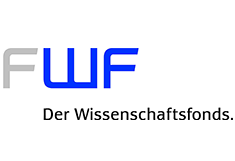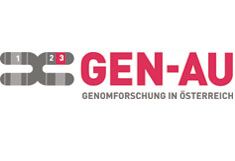Arbeitsgruppe ADAM
Pflanze-Pathogen Interaktion
Gebiet
Gebiet
Gendisruption und heterologe Expression von PKS Genen von Fusarium. Heterologe Expression von pflanzlichen Detoxifikationsenzymen.
Leiter: Ao.Univ.Prof. DI. Dr. Gerhard Adam
Ausrichtung
The main research objectives are:
- to elucidate the role of secondary metabolites produced by plant pathogenic fungi (“mycotoxins”) that are suspected to act as virulence factors and to elucidate their mode of action in planta
- to elucidate resistance mechanisms of plants against fungal metabolites and to utilize this knowledge for plant resistance breeding
- to identify microorganisms with the capability to detoxify mycotoxins and to explore the molecular and genetic basis of detoxification
Previously the model systems S. cerevisiae and Arabidopsis have been utilized to study resistance mechanisms of plants against toxins of the class of trichothecenes (e.g. the Fusarium metabolite deoxynivalenol), such as target alterations (amino-acid changes in ribosomal protein L3) and detoxification (by UDP-glucosyltransferases and acetyltransferases). More recently the interest shifted to the estrogenic metabolite Fusarium zearalenone (and its role in plants), and other Fusarium metabolites. With the availability of the genome sequence of Fusarium graminearum our focus is now on identification of new metabolites corresponding to the predicted secondary metabolite biosynthetic genes and the elucidation of the biochemical effects of such compounds. Recently we also started to study the interaction of Fusarium with the new monocot model system Brachypodium distachyon and the detoxification of Fusarium metabolites by Brachypodium. Formation of toxin-glucosides is an important detoxification mechanism in plants, but potentially leads to formation of masked mycotoxins.
These research directions required the establishment of firm interdisciplinary collaborations with chemists and plant breeders, which was achieved by obtaining funding for a larger consortium from the Austrian genome programme GEN-AU (coordinator: G. Adam) The establishment of Fusarium genomics resources (e.g. FGDB) became possible by fruitful collaboratios with leading researchers in the US (e.g. Corby Kistler) and with the German bioinformatic institution MIPS (now renamed Helmholtz Zentrum München). Recently a 4 year special research programme (SFB) coordinated by G. Adam was funded by the Austrian Science Fund FWF.
An additional area of the working group is the elucidation of the molecular mechanisms of detoxification of Fusarium toxins by microbes, which is mostly done in collaboration with the industry partner Biomin.
Background info to the Fusarium problem and international efforts:
Projekte
Publikationen
ausgewählte Publikationen (seit 2003)
Berthiller F., Hametner C., Krenn P., Schweiger W., Ludwig R., Adam G., Krska R., Schuhmacher R. (2009): Preparation and characterization of the masked Fusarium mycotoxins zearalenone-4O-beta-D-glucopyranoside, alpha-zearalenol-4O-beta-D-gluco pyranoside and beta-zearalenol-4O-beta-D-glucopyranoside by MS/MS and 2D-NMR. Food Addit. Contam. 26: 207-213
Abolmaali S, Mitterbauer R, Spadiut O, Peruci M, Weindorfer H, Lucyshyn D, Ellersdorfer G, Lemmens M, Moll WD, Adam G (2008) Engineered bakers yeast as a sensitive bioassay indicator organism for the trichothecene toxin deoxynivalenol. J Microbiol Meth 72: 306-12.
Cuomo CA, Guldener U, Xu JR, Trail F, Turgeon BG, Di Pietro A, Walton JD, Ma LJ, Baker SE, Rep M, Adam G, et al. Birren BW, Kistler HC. (2007): The Fusarium graminearum genome reveals a link between localized polymorphism and pathogen specialization. Science 317: 1400-1402.
Lucyshyn D., Busch B.L., Abolmaali S., Steiner B., Chandler E., Sanjarian F., Mousavi A., Nicholson P., Buerstmayr H., Adam G. (2007) Cloning and characterization of the ribosomal protein L3 (RPL3) gene family from Triticum aestivum. Mol. Genet. Genomics 277: 507-517.
Poppenberger B, Berthiller F, Bachmann H, Lucyshyn D, Peterbauer C, Mitterbauer R, Schuhmacher R, Krska R, Glössl J, Adam G (2006) Heterologous expression of Arabidopsis UDP-glucosyltransferases in yeast for the production of zearalenone-4-O-glucoside. Appl. Environ. Microbiol. 72: 4404-4410.
Güldener U, Mannhaupt G, Münsterkötter M, Haase D, Oesterheld M, Stümpflen V, Mewes H-W, Adam G (2006) FGDB: a comprehensive fungal genome resource on the plant pathogen Fusarium graminearum. Nucl. Acids. Res. 34 D: 456-458.
Poppenberger B., Fujioka S., Soeno K., George G.L., Vaistij F.E., Hiranuma S., Seto H., Takatsuo S., Adam G., Yoshida S., Bowles D. (2005) The UGT73C5 of Arabidopsis thaliana glucosylates brassinosteroids. Proc. Natl. Acad Sci. USA 102: 15253-1525.
Lemmens M., Scholz U., Berthiller F., Dall’Asta C., Koutnik A., Schuhmacher R., Adam G., Buerstmayr H., Mesterházy Á., Krska R., Ruckenbauer P. (2005) The ability to detoxify the mycotoxin deoxynivalenol colocalizes with a major quantitative trait locus for Fusarium head blight resistance in wheat. Molec. Plant Microbe Interact. 18: 1318-1324. Mitterbauer R, Poppenberger B, Raditschnig A, Lucyshyn D, Lemmens M, Glössl J, Adam G (2004) Toxin-dependent utilization of engineered ribosomal protein L3 limits trichothecene resistance in transgenic plants. Plant Biotech. J. 2: 329-340.
Poppenberger B, Berthiller F, Lucyshyn D, Sieberer T, Schuhmacher R, Krska R, Kuchler K, Glössl J, Luschnig C, Adam G (2003) Detoxification of the Fusarium mycotoxin deoxynivalenol by a UDP-glucosyltransferase from Arabidopsis thaliana. J. Biol. Chem. 278: 47905-47914.
Förderungsorganisationen
Kooperationen
National and international (alphabetical order):
- Hikmet Budak (Sabanci University, Turkey): Brachypodium accessions
- Johannes Fröhlich (TU Vienna University of Technology, Institute of Applied Synthetic Chemistry): DON and ZON-glucuronides
- Corby Kistler (Univ. Minnesota, MN; USA) Fusarium genomics tools (Affymetrix gene chip)
- Hans Werner Mewes, Ulrich Gueldener, Klaus Mayer Helmholtz Zentrum München („MIPS“): Bioinformatics, annotation of Fusarium and Brachypodium.
- Gary Muehlbauer (Univ. Minnesota, MN, USA): Barley glucosyltransferases
- Andreas Musilek (Atomic Institute of the Austrian Universities, Vienna): Mutagenesis (neutron & γ -irradiation)
- Gillian Turgeon (Cornell University, NY, USA): Fusarium siderophore mutants
SFB partners and other BOKU groups outside of our department:
- Hermann Bürstmayr (IFA Tulln, PlantBiotechnology): Wheat cultivars, doubled haploid mapping populations, candidate genes.
- Rudolf Krska, Rainer Schuhmacher, Franz Berthiller (IFA Tulln, Center for Analytical Chemistry): glucosides, novel metabolites
- Marc Lemmens (IFA Tulln, PlantBiotechnology): Isolation of Fusarium toxins, virulence testing of Fusarium mutants
- Clemes Peterbauer, Roland Ludwig (Department of Food Science & Technology): Fermentations
- Thomas Rosenau, Martina Opietnik (Dept. Für Chemie): Synthesis of NIV-glucoside
- Katja Sterflinger, G. Ellersdorfer (Department of Biotechnology, Austrian Center of Biological Resources and Applied Mycology): Strain collection
Within the Department of Applied Genetics and Cell Biology:
- Marie-Theres Hauser (zearalenone)
- Christian Luschnig (Effekt of Fusarium toxins in Arabidopsis)
- Lukas Mach (Effect of toxins in human cells)
- Eva Stöger (cereal transformation)
- Joseph Strauss (fungal genomics).



